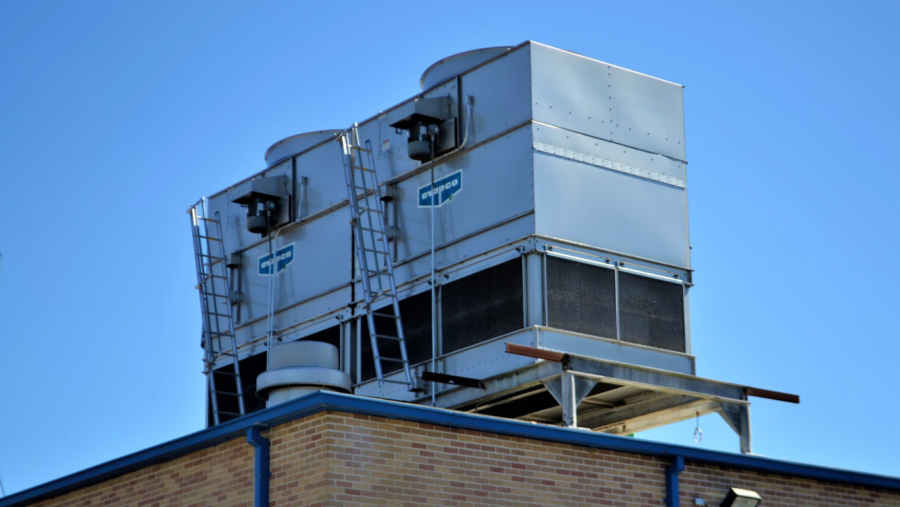
The journey towards achieving a net-zero emissions building can seem daunting and fraught with obstacles. Existing building constraints, as well as resource and time limitations, can impede progress towards optimistic goals of becoming a net-zero organization by 2050, a commitment many entities have made. Consequently, it may be tempting to postpone efforts for another decade. However, with regulatory mandates being implemented in the United States, it is probable that the Canadian government will face mounting pressure to follow suit. Therefore, it is imperative to be well-informed and take incremental steps towards achieving net-zero emissions now, to ensure long-term sustainability and resilience. In addition to contributing to a sustainable future, adopting such measures can yield significant cost savings and enhance your organization’s reputation. This article simplifies years of experience in supporting organizations to achieving net-zero emissions through building electrification in five steps.
Electrification is a critical component of moving towards a net-zero building. A net-zero building is one that produces as much energy as it consumes over the course of a year. To achieve this, it is necessary to reduce the building’s energy demand and ensure that the energy used comes from renewable sources. Electrification helps to achieve both of these goals. By replacing fossil fuel-powered heating and cooling systems with electric ones, building owners can reduce their reliance on non-renewable energy sources.
By leveraging insights from multiple case studies of our clients, we have identified five steps you can take now to prepare for future changes and achieve net-zero emissions.
1. Conduct a Comprehensive Energy Audit
To begin the process of building electrification, it’s important to have a good understanding of the current energy consumption of the building. Conducting a comprehensive energy audit will help identify areas of inefficiency and opportunities for improvement. This can help guide decisions about which electrification strategies will be most effective for the building.
At Loring, we have extensive experience conducting energy audits, having completed over 600 ASHRAE Level II and Level III audit projects in the last 10 years. Through this work, we have identified numerous opportunities and strategies for our clients to reduce energy consumption and achieve their sustainability goals.
Our comprehensive approach to energy audits, informed by lessons learned from previous projects, enables us to provide our clients with the best-in-class learning and experience in the industry. We pride ourselves on consistently delivering high-quality results that exceed our clients’ expectations.
2. Install High-Efficiency HVAC Systems

Heating, ventilation, and air conditioning (HVAC) systems are a major source of energy consumption in the buildings. Replacing old, inefficient HVAC systems with new, high-efficiency alternatives can significantly reduce energy consumption and emissions. This can include heat pumps, which use electricity to extract heat from the air or ground, or geothermal systems, which use the constant temperature of the earth to heat and cool buildings. This was the case in our recent major capital project at the Michigan State Capitol.
Loring is currently developing a design package for a new transit agency headquarters building in Ontario, Canada. The building MEP systems will be an all-electric solution focusing on sustainability as the project is slated to achieve LEED Silver and Net–Zero Greenhouse Gas status. More to come on this exciting project.
3. Switch to Electric Appliances
Replacing gas-powered appliances with electric alternatives can significantly reduce a building’s carbon footprint. This can include electric stoves, water heaters, and dryers. The use of electric vehicles for transportation can also help reduce emissions associated with commuting and transportation.
However, a switch to electric is not always straightforward and has to be planned for.
Loring Consulting Engineers worked with a major Canadian bank on their sustainability program at a national level. The scope of work involved evaluating which bank branches could utilize electric appliances for heating and cooling, taking into consideration power capacity at each site. This provided the bank vital information to plan for conversions in the next few years, as units reached end–of–life status.

4. Install Rooftop Solar Panels:
Solar panels can be installed on the roof of a building to generate clean, renewable electricity. This can help reduce a building’s dependence on grid electricity and provide cost savings over time. In some cases, excess energy generated by the solar panels can be sold back to the grid, providing additional revenue.
Loring has been working with several K-12 schools to comply with local energy laws by designing solar photovoltaic systems that elevate the design requirements above minimum building code requirements. Though these additional requirements could be achieved by either a green roof or a blue roof, these options presented challenges that outweighed the benefits. A green roof can be prone to additional maintenance, while a blue roof presents substantial design and construction costs. These factors, coupled with the benefit of the solar photovoltaic system, reduced the amount of power required from the electrical utility grid, and ultimately guided the roof design options towards the ideal solution. At another site, the solar photovoltaic system was coupled with battery storage and export capability to the utility grid. More to come on this existing project!
5. Using Building Automation Systems to Reduce Energy Consumption
A building automation system (BAS) can play a crucial role in achieving net-zero emissions by reducing energy consumption in buildings. A BAS can control and optimize various mechanical systems in the building, such as HVAC and lighting, to operate more efficiently and use less energy. By implementing measures such as converting airside and waterside systems to variable volume, adding night setback and optimized start sequences, and integrating renewable energy sources such as solar panels, a BAS can significantly reduce a building’s energy consumption and greenhouse gas emissions. This, in turn, helps move buildings towards net-zero emissions and supports the electrification of building systems to rely more on renewable energy sources.
Loring recently completed a full renovation of the BAS at the 120,000– square foot Toronto City Hall complex. This involved the replacement of the entire BAS across the facility, including the two towers, podium, and Nathan Phillips Square. As part of the upgrade, various mechanical systems were reviewed, and multiple energy conservation measures were implemented to reduce the energy consumption and greenhouse gas emissions of the facility.
These measures included converting airside and waterside systems to variable volume, as well as adding night setback and optimized start sequences.
By making these changes, Loring calculated potential savings of 730,000 kWh/year of electricity, 840,000 lbs/year of steam, 95 tons/year of GHG emissions, and $141,000/year of utility cost savings. Following the completion of the BAS upgrade, the electricity and steam consumption were evaluated, and the utility bills showed a 20% reduction in electricity consumption.
Conclusion
As more and more Canadian organizations commit to reducing their carbon footprints and achieving net-zero emissions status by 2050, they are becoming increasingly aware of obstacles impeding sustainability – obstacles that must be overcome if their goals are to be met. With its long history of incorporating sustainability and energy efficiency into its work, Loring stands ready to partner with these organizations to create options that are both forward-thinking and environmentally responsible.
Authors
Nigel Bastiampillai is a Principal in Loring’s Toronto office. Kalpak Karule is a Principal in the New York office.